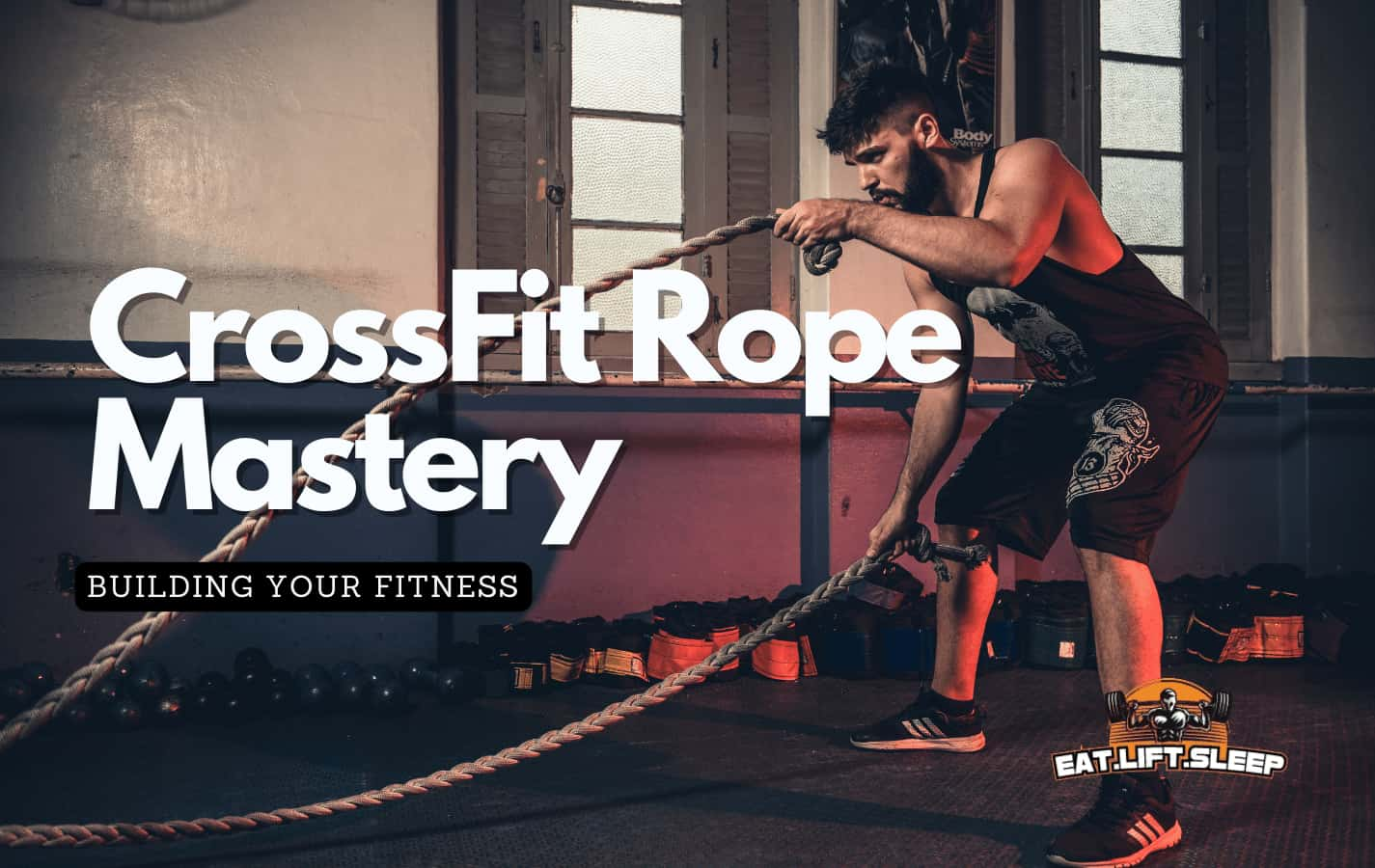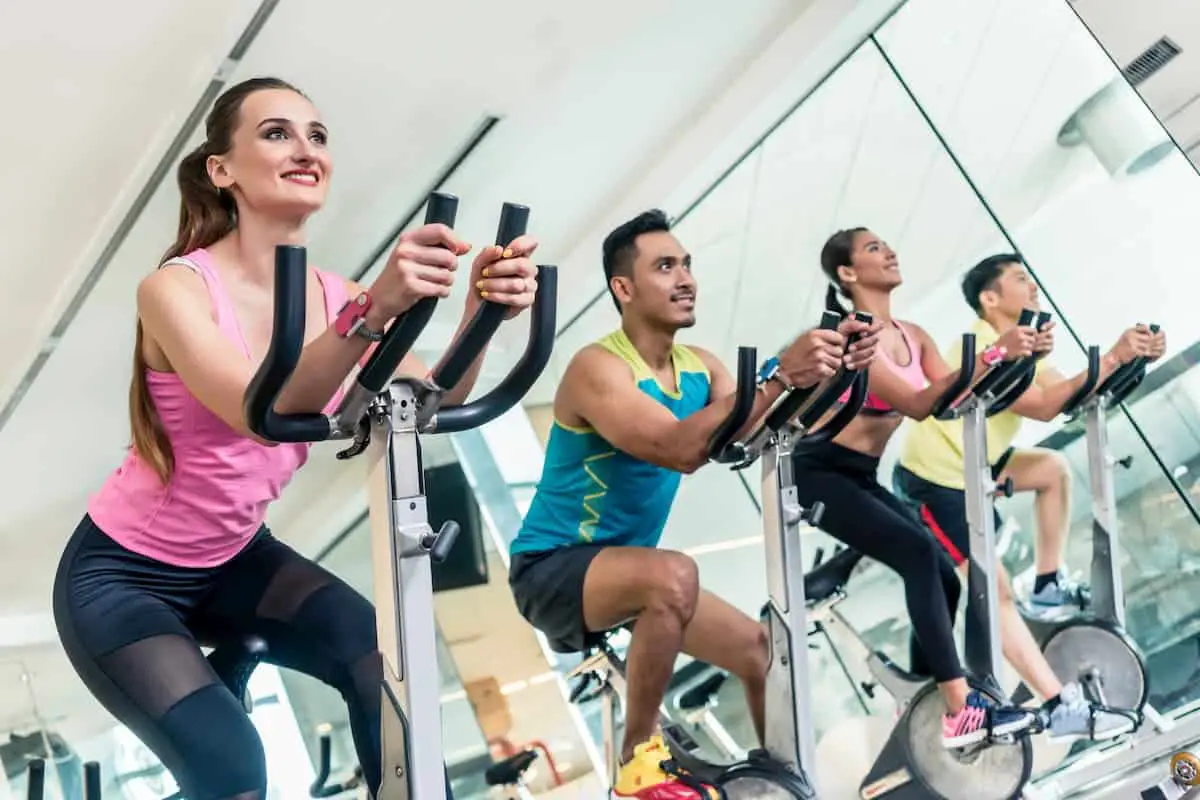Are you curious about what exactly a CrossFit rope is? If so, you’ve come to the right place.
CrossFit workouts are known for their high-intensity movements that require strength, endurance, and agility. Jumping rope has been a staple exercise in CrossFit workouts since the early days of the sport.
A CrossFit rope is a specially designed jump rope that is optimized for CrossFit-style exercises. Keep reading to learn more about what makes these ropes unique and why they are an essential tool for anyone looking to improve their CrossFit performance.
What is CrossFit?
If you’re unfamiliar with the high-intensity fitness regimen that’s taken the world by storm, you might want to sit down and prepare yourself for an intense workout.
CrossFit is a type of exercise that focuses on functional movements performed at high intensity levels. It was founded by Greg Glassman in 2000 and quickly gained popularity due to its challenging workouts and community-based approach.
CrossFit exercises are designed to mimic movements found in everyday life, such as lifting heavy objects or running up stairs. These exercises are often done in a circuit-style format where participants move from one exercise to the next without rest.
The goal is to improve overall fitness, including strength, endurance, speed, agility, balance and coordination. CrossFit training techniques include Olympic weightlifting, gymnastics-style movements like pull-ups and muscle-ups, cardio exercises like rowing or running, and bodyweight movements like squats and push-ups.
Workouts can be modified for people of all fitness levels so anyone can participate. If you’re looking for a challenging workout that’ll push your limits while building a supportive community around you, CrossFit might just be the perfect fit for you!
The Importance of Jump Rope in CrossFit Workouts
You know how crucial it is to include jump rope in your workouts if you want to improve your endurance, coordination, and overall athletic performance. This is especially true for CrossFit athletes who need to be able to perform a variety of movements quickly and efficiently.
Jumping rope is an excellent way to develop the necessary skills and techniques needed for CrossFit workouts. The importance of jump rope in CrossFit cannot be overstated. It helps build cardiovascular endurance, improves footwork and agility, and enhances hand-eye coordination. These are all essential skills that will help you excel in any type of physical activity or sport.
Additionally, jumping rope can also help prevent injuries by strengthening the muscles around your joints. To get the most out of your jump rope training, it’s important to learn proper techniques such as maintaining good posture, keeping your elbows close to your body, and using a quick wrist flick instead of relying on arm strength.
You should also vary the types of jumps you do (e.g., single unders, double unders) and incorporate them into different workout routines. By doing so, you’ll not only improve your overall fitness but also have fun while doing it!
Materials Used in CrossFit Ropes
The materials used in CrossFit jump ropes can greatly impact your performance and workout experience. Jump rope materials have a direct correlation with durability and performance, two factors that are crucial in any CrossFit routine.
Here are some of the materials commonly used in CrossFit jump ropes:
- PVC: Polyvinyl chloride or PVC is one of the most common materials used for jump ropes. It’s affordable, lightweight, and durable, making it perfect for beginners who want to start practicing their double unders.
- Steel Cable: For those who are looking for more speed and precision in their movements, steel cable is an excellent option. This material is incredibly fast and allows you to perform quick rotations without sacrificing control.
- Nylon: Those who prioritize durability over speed should consider a nylon jump rope. This material can withstand tough conditions without fraying or breaking easily.
Choosing the right material for your CrossFit jump rope will not only improve your performance but also enhance your overall experience during workouts.
When selecting a CrossFit rope, it’s important to consider several factors aside from the materials used. These include length, handle grip, weight distribution, and adjustability. The right combination of these features can make all the difference in achieving optimal results during training sessions.
In conclusion, investing in quality CrossFit equipment such as jump ropes made with durable and high-performance materials will undoubtedly help you achieve your fitness goals faster while minimizing injuries. With so many options available on the market today, take some time to research different brands before making a purchase that meets all of your needs as an athlete.
Adjustability of CrossFit Ropes
Adjusting the length of your jump rope to fit your body perfectly can feel like sliding on a tailor-made suit, ensuring maximum comfort and efficiency during your workouts. Luckily, crossfit ropes come with various adjustability options that you can use to customize the length according to your height and skill level.
Some models have adjustable screws at the handle’s base, while others feature detachable cables that make it easy to switch between different lengths. When choosing an adjustable crossfit rope, pay attention to its maximum length capacity.
If you’re tall or prefer longer ropes for double-unders and other advanced moves, look for models with at least 10 feet of cable. However, if you’re new to jump roping or have a smaller frame, consider shorter options that are easier to control and won’t trip you up as much.
Keep in mind that some brands offer customization services where they cut the cable precisely for your size so you can skip measuring altogether. Having an adjustable crossfit rope is not only essential for achieving proper form but also keeps things interesting by allowing you to experiment with different techniques and styles.
By tweaking the length slightly every few weeks or months, you’ll challenge your muscles in new ways and avoid plateauing in your progress. Plus, having a personalized jump rope will motivate you to keep practicing and improving until you reach your fitness goals!
Types of CrossFit Ropes
If you want to take your jump rope game to the next level, it’s important to know about the different types available and how they can impact your workout.
Two popular types of CrossFit ropes are weighted ropes and speed ropes. Weighted ropes are heavier than traditional jump ropes, which means they require more effort to swing and provide a more intense workout for your upper body. They’re great for building strength and improving coordination.
Speed ropes, on the other hand, are lighter and faster than traditional jump ropes. They allow you to perform double unders (where the rope passes under your feet twice in one jump) with greater ease and efficiency. The thin cable also allows for quicker rotation, making them ideal for high-intensity interval training (HIIT) workouts or timed challenges.
Other types of CrossFit ropes include beaded ropes (which have plastic beads along the length of the rope), freestyle ropes (which have longer handles for tricks and fancy footwork), and even smart ropes (which track your jumps and calories burned through an app).
It’s worth experimenting with different types of CrossFit ropes to find what works best for you – whether that’s a slower, heavier rope or a lightning-fast speed rope. Regardless of which type you choose, incorporating jumping rope into your workouts is an excellent way to build endurance, agility, coordination, and burn calories!
Factors to Consider When Choosing a CrossFit Rope
If you’re looking to buy a CrossFit rope, there are a few factors to consider. First, your skill level plays a big role in determining the type of rope you need. If you’re just starting out, look for a lightweight and easy-to-handle rope that won’t trip you up as much.
Second, keep your budget in mind when choosing a rope – there are many options available at different price points.
Finally, personal preference is important – some people prefer thicker or thinner ropes, longer or shorter handles, and different materials for their ropes.
Skill level
You’ll want to challenge yourself with more advanced techniques once you’ve mastered the basics of jumping. If you’re a beginner, it’s best to start with a thicker rope that has some weight to it. As you progress, you can switch to a thinner and faster rope. This will help improve your jumping technique and increase workout intensity.
For intermediate or advanced CrossFitters, double unders and triple unders are great ways to add variety and difficulty to your workouts. Double unders involve passing the rope under your feet twice in one jump, while triple unders involve passing the rope under your feet three times in one jump. These techniques require precision and timing but they’re worth mastering as they can significantly boost your cardiovascular endurance and agility.
Remember that practice makes perfect when it comes to CrossFit ropes, so don’t be afraid to try new techniques and push yourself out of your comfort zone!
Budget
Looking for an affordable option for your CrossFit rope? You’re in luck! There are plenty of cost-effective alternatives out there that won’t break the bank.
While some may argue that the more expensive ropes provide better quality and durability, these budget-friendly options can still get the job done.
One such option is a basic speed rope. These ropes typically range from $5 to $20 and are perfect for beginners or those on a tight budget. They’re lightweight, easy to use, and can help improve endurance and coordination.
Another option is a beaded jump rope, which typically costs around $10 to $30. These ropes have weighted beads along the length of the rope, providing added resistance and making them great for building strength in your wrists and forearms.
Personal preferences
When it comes to your personal preferences, there are a variety of factors you’ll want to consider before choosing the perfect jump rope for you.
First and foremost, think about what type of workout you’ll be doing with the rope. Will it be high intensity interval training (HIIT) or endurance-focused cardio? This will determine the weight and length of the rope that’s best suited for your needs.
Secondly, consider your own physical abilities and limitations. If you’re just starting out with jump rope workouts, you may want a lighter weight rope to help build up your endurance gradually.
Finally, think about brand loyalty – do you have a favorite fitness brand that makes quality ropes? If so, it’s worth checking out their offerings.
To help narrow down your choices even further, here are three key things to keep in mind when selecting a jump rope based on your personal preferences:
- Handle grip: Do you prefer foam handles or bare metal ones? Foam handles can provide extra comfort during longer workouts but may wear down faster over time.
- Rope material: Do you want a classic speed cable or something more durable like a thick PVC cord? Consider where you’ll be jumping (indoors vs outdoors) and if durability is important to you.
- Adjustability: Some ropes come with adjustable lengths while others are fixed sizes. If multiple people will be using the same rope or if you’re looking for something more versatile, an adjustable option may be best for your needs.
Benefits of Using a CrossFit Rope
If you’re looking to improve your cardiovascular fitness, a crossfit rope is the perfect tool.
Jumping rope at a high intensity for just 10 minutes can burn up to 130 calories and get your heart rate up quickly.
Not only does it help with weight loss and toning, but it also improves coordination and agility by forcing you to focus on timing and balance.
Additionally, using a crossfit rope regularly can lead to improved endurance and stamina over time as your body adapts to the high-intensity cardio workout.
Cardiovascular fitness
You’ll feel your heart pumping and your body working hard as you jump, sweat dripping down your face, pushing yourself to build endurance and strength through dynamic movements.
High intensity interval training (HIIT) is an effective way to improve cardiovascular fitness, and incorporating a crossfit rope into your routine can take it to the next level. The constant jumping motion not only raises your heart rate but also engages multiple muscle groups in your legs, core, and arms.
Endurance training is another benefit of using a crossfit rope. As you continue to use it regularly, you’ll notice improvements in how long you can jump without stopping or slowing down. This translates into better overall stamina and endurance for other activities such as running or cycling.
Plus, the mental challenge of pushing through fatigue during a jump rope workout can also help improve mental toughness and perseverance in other areas of life.
Coordination and agility
Improving your coordination and agility is a natural outcome of incorporating jumping exercises into your workout routine, as you’ll quickly become more adept at transitioning between different movements. Crossfit ropes are essential tools for developing these physical attributes, as they require you to coordinate your hand and foot movements while also maintaining proper form.
By practicing with a crossfit rope, you’ll not only improve your cardiovascular fitness but also enhance your overall athleticism. Agility drills are an excellent way to further develop the benefits of using a crossfit rope in your workouts. These exercises challenge both your hand-eye coordination and reaction time, which can help improve your balance and spatial awareness.
Additionally, incorporating agility drills into your routine can help prevent injuries by building strength in the muscles that support joint movement. To maximize the benefits of using a crossfit rope for agility training, try adding some of these simple drills to your workout:
- Single-leg hops: Jump on one leg over the rope as it swings beneath you.
- Lateral jumps: Jump side-to-side over the rope without stopping or getting tangled.
- High knees: Jump while bringing each knee up toward your chest.
- Crossover jumps: Jump across the rope from side to side, crossing one foot in front of the other.
Improved endurance and stamina
Improving your coordination and agility is just one benefit of using a crossfit rope. But that’s not all it has to offer! With consistent use, you’ll also notice improvements in your endurance and stamina.
Crossfit ropes are an excellent tool for improving speed and building endurance. Using this piece of equipment during workouts can help increase your heart rate, push your limits, and build up your cardiovascular system over time.
Additionally, many crossfit ropes incorporate various training techniques such as intervals or timed sets that can challenge your body in new ways while forcing you to maintain proper form throughout each movement.
Whether you’re looking to improve running times or simply build more stamina for daily activities, incorporating a crossfit rope into your routine is sure to help boost overall endurance levels.
What Is the Ideal Length for Crossfit Jump Ropes?
The ideal crossfit jump rope length varies for each individual, based on their height, skill level, and personal preference. However, a general guideline suggests that the rope should be long enough to reach the armpits when standing on the middle of it. This allows for effective rotation and prevents tangling during workouts. Finding the ideal crossfit jump rope length may require some experimentation and adjustments to meet individual needs.
Conclusion
So there you have it! CrossFit ropes are an essential part of any CrossFit workout. They provide a great cardiovascular workout, improve coordination and balance, and can help develop overall athleticism.
With so many different materials, adjustability options, and types to choose from, it’s important to take the time to find the rope that works best for you. Whether you’re just starting out or are a seasoned veteran, incorporating a CrossFit rope into your routine will undoubtedly take your fitness to the next level.
So don’t be afraid to give it a try! Find a rope that fits your needs and get jumping. You’ll be amazed at how quickly you improve as you challenge yourself with new techniques and movements.
Keep pushing yourself and enjoy all of the benefits that come along with using a CrossFit rope in your workouts. You won’t regret it!




